Keeping your water ionizer machine in top shape is essential. Regular maintenance and troubleshooting can address common issues like power failures or changes in water taste. Knowing how to troubleshoot water ionizer machine problems ensures you can fix issues efficiently and extend its lifespan.
This guide will help you find and fix different problems with your water ionizer. You’ll learn how to check the power, water flow, and quality. This way, you can keep your machine working well for a long time.
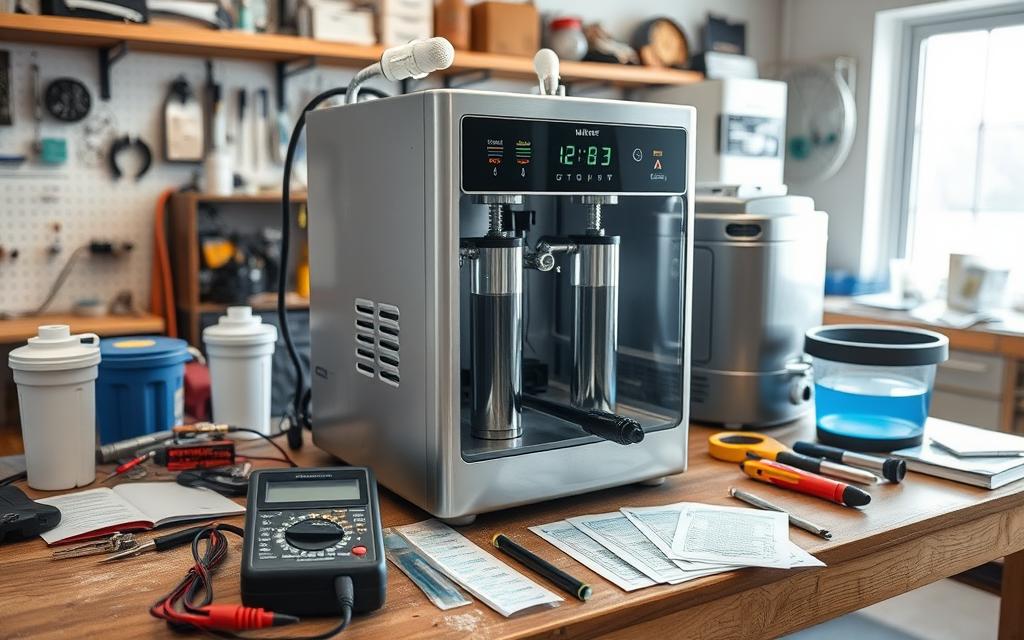
Key Takeaways
- Water ionizers need regular care and fixing to work best.
- Common issues include power problems, water flow issues, and taste or odor concerns.
- Knowing your water ionizer’s parts and how they work is key for fixing it.
- Changing filters and cleaning regularly helps your water ionizer last longer.
- Fixing water quality issues, like pH imbalance, makes your water ionizer more efficient.
Understanding Your Water Ionizer Machine
Water ionizers turn regular tap water into two types: alkaline and acidic. They have key parts like electrodes, filters, and a control panel. These parts work together to split the water into its alkaline and acidic parts through electrolysis.
Components of a Water Ionizer
The main parts of a water ionizer are:
- Electrodes: These charged plates, often made of Platinum-coated Titanium, are responsible for the electrolysis process that divides the water.
- Filters: Water ionizers typically feature one or more filters to remove impurities and contaminants from the incoming water supply.
- Control Panel: This user-friendly interface allows you to adjust settings, monitor performance, and select the desired pH level of the output water.
How It Works
The ionization process starts when water flows through the ionizer’s charged electrodes. Through electrodialysis, the water is split into alkaline and acidic parts. The alkaline water, full of antioxidants and minerals, goes to the output spout. The acidic water, rich in carbonic acid, is used for other household tasks.
Common Types of Ionizers
There are many styles and sizes of water ionizers for different needs. The two main types are:
- Countertop Ionizers: These small, self-contained units fit on your kitchen counter, making them a favorite for many.
- Under-Sink Ionizers: These models save space by being installed under the sink, still offering ionized water benefits.
Knowing how your water ionizer works is key for fixing issues and keeping it running well.
“The alkalinity of ionized water helps the body absorb it better. This is because it affects aquaporins, tiny channels in cells that control water intake based on pH levels.”
Identifying Common Issues
Having a water ionizer machine can really improve your health. But, like any device, it can sometimes have problems. Knowing about common issues with water ionizers is key.
No Power or Display
One big problem is when your ionizer won’t turn on. This might be because of a power issue, a tripped circuit, or a broken display. First, check the power cord and make sure the outlet works. Try resetting the machine too.
Slow Water Flow
If your ionizer’s water flow is slow, it might be due to a clogged filter or mineral buildup. Check and replace the filter if needed. If it’s still slow, clean the machine or look for clogs.
Unusual Taste or Odor
Changes in water taste or smell can mean several things. It could be a bad filter or contaminants in the water. Try replacing the filter and cleaning the machine. If it doesn’t get better, check your water source.
Regular maintenance and fixing these water ionizer issues, water ionizer problems, and water ionizer troubleshooting tips can keep your ionizer working well. This way, you’ll always have fresh, healthy alkaline water.
Checking Power Supply
If your water ionizer machine won’t turn on or show any power, start by checking the power supply. Look at the power cord, test the outlet, and reset the machine. These steps can help fix common power and electrical issues.
Inspecting the Power Cord
First, check the power cord for damage, fraying, or loose connections. Make sure it’s plugged in correctly at both ends. If it’s damaged, get a new one that fits your model.
Testing the Outlet
Then, test the outlet to see if it’s working. Plug in another device to check. If it doesn’t work, try a different outlet or check your circuit breaker. Make sure the water ionizer’s power switch is on, and the display should flash when power is present.
Resetting the Machine
If everything else checks out, try resetting the water ionizer. Unplug, wait 30 seconds, then plug it back in. This can fix temporary issues or software problems.
By following these steps, you can often fix power issues with your water ionizer. If problems continue, you might need to contact the manufacturer or a professional for help.
| Specification | Value |
|---|---|
| Input power range | AC 110~240V, 50~60Hz |
| Standby power consumption | About 3.5W |
| Heating power | 1800W (AC115V 60Hz) and 2700W (AC220V 50Hz) |
| Electrolytic power | 110W |
“Troubleshooting power issues with your water ionizer machine is a crucial first step in resolving any problems. By methodically checking the power supply, you can often get your device back up and running without needing to call for professional assistance.”
Troubleshooting Water Flow Problems
If your water ionizer machine has water flow issues, there are a few things to check. Look at the water filter, make sure it’s set up right, and check for clogs. These steps can often fix the problem.
Inspecting the Water Filter
A clogged water filter is a common cause of slow water flow. Filters can get blocked by impurities, which lowers water pressure and flow. It’s important to regularly clean and replace your filter as the maker suggests to keep water flowing well.
Ensuring Proper Setup
How your water ionizer is installed and set up can also affect water flow. Make sure it’s connected right with the white water hose. Also, check that there’s enough water pressure getting to the unit. For under-sink setups, cut the hoses to the right size to avoid pinching or kinking that can block water flow.
Checking for Clogs
Other than filter problems, clogs in the ionizer’s parts can also slow down water flow. Check the flow valve to make sure it’s open. If you think there’s a clog, take off the alkaline hose and test the water flow to find where the blockage is. Cleaning the system with white vinegar or using a citric acid cleaning cartridge might fix any clogs.
By fixing these common water flow issues, you can get your water ionizer working at its best. This way, you can enjoy clean, ionized water again.
| Cause | Solution |
|---|---|
| Clogged water filter | Replace water filter according to manufacturer’s recommendations |
| Improper setup (hose kinks, low water pressure) | Check hose connections and ensure sufficient water pressure |
| Internal clogs | Clean system with white vinegar or use citric acid cleaning cartridge |
“Regular maintenance and timely filter replacements are crucial for maintaining optimal water flow in your water ionizer machine.”
Resolving Taste or Odor Issues
If your water ionizer tastes or smells off, there are steps to fix it. First, replace the water filter regularly, usually every 12 months or when it hits 9999. The Biostone filters in many ionizers remove many impurities. These include chlorine, chloramines, and microbes, which can make water taste bad.
Replacing the Filter
Not replacing the filter can cause a buildup of contaminants. These can then make your water taste or smell bad. Regularly replacing the filter keeps your water clean and fresh.
Cleaning the Machine
Cleaning your water ionizer is also crucial. Mineral deposits and residues can build up over time. A good cleaning with a recommended solution or baking soda and vinegar can fix this. It helps your ionizer work better.
Checking Water Source Quality
If your water still tastes or smells bad, check your water source. Changes in the water supply or well issues can affect taste. Talking to a water quality expert can help find and fix the problem.
To solve taste or odor problems, replace the filter, clean the machine, and check your water source. Keeping your ionizer in good shape ensures it makes great-tasting water for years.
Addressing pH Level Concerns
Keeping the right pH levels in your water ionizer is key for top performance and health perks. Knowing how to spot pH issues and fix them ensures your ionizer makes alkaline water as it should.
Understanding pH Indicators
To check if your ionized water is truly alkaline, use pH reagent testing drops. Just pour water from your ionizer at 1.5 to 2 liters per minute and add the drops. This method lets you precisely measure the pH of your water.
Troubleshooting pH Imbalance
If your water’s pH isn’t right, there are steps to fix it. First, make sure your ionizer is set up right and the water flows well. Clogs or problems with parts inside can mess with pH levels. Keeping your ionizer clean and well-maintained helps keep pH levels steady.
Regular Maintenance Tips
- Replace the alkaline water filter every year, as the maker suggests.
- Regularly clean the ionizer’s plates and parts to stop mineral buildup.
- Watch the water flow rate and adjust it if needed to keep pH levels right.
- Calibrate your ionizer now and then to get accurate pH readings.
By knowing how to spot pH issues, fixing them, and keeping up with maintenance, you can make sure your water ionizer works great. Enjoy the perks of alkaline water at the right pH.
Inspecting for Leaks
Keeping your water ionizer machine in good shape is key to its long life and best performance. Leaks can happen due to loose connections or too much water pressure. It’s important to fix these leaks fast to avoid water damage and keep your ionizer working well.
Identifying Leak Sources
To tackle water ionizer leaks, first find where they’re coming from. Check the quick-connect fittings, hoses, and other connections for tightness. Look for any wear or damage, like cracks, that might be causing the leak.
Tightening Connections
If you find loose connections, use the right tools, like a wrench, to tighten them. But be careful not to tighten too much. You can also use plumber’s tape or new O-rings or gaskets to seal the connections and stop leaks.
When to Seek Professional Help
If leaks keep happening after tightening, you might need a pro. A water ionizer technician can find and fix complex problems, like water pressure issues or broken parts. Trying to fix it yourself without the right tools and knowledge can make things worse.
Regular checks and maintenance are crucial to avoid leaks and keep your ionizer in top shape. By fixing problems quickly and getting help when needed, you can ensure your ionizer works well and avoid expensive water damage.
Software and Settings Troubles
Dealing with your water ionizer’s software and settings can seem tough. But, with some help, you can fix any problems quickly. This guide will help you reset factory settings, update software, or adjust settings. You’ll get your machine working right again.
Restoring Factory Settings
First, try to reset your water ionizer to its factory settings if it has software issues. This resets the machine to its original state. It can fix many software and setting problems. Check your user manual for how to do this.
Updating Software
Updating your water ionizer’s firmware is another good solution. Manufacturers often release updates to fix bugs and add new features. Visit the manufacturer’s website or contact their support to see if updates are available for your model. Make sure to follow the instructions carefully for a successful update.
Navigating User Manual Settings
Your user manual is a great resource for learning about your water ionizer’s settings. Take time to read it well. Learn how to change settings like pH output and water flow rate to fit your needs.
By following these steps, you can make sure your water ionizer works well. Always check your user manual and the manufacturer’s website for the latest troubleshooting tips for your model.
| Feature | Specification |
|---|---|
| Power System | Adjustable up to 805 watts |
| pH Output Range | 1.7 to 12.2 |
| ORP Output | Up to -1005 |
| Water Settings | 1 purified, 3 acidic, 4 alkaline |
| Warranty | Lifetime |
| Dimensions | 12.5″ width, 15″ height, 6.25″ depth |
“Proper maintenance and regular software updates are key to ensuring your water ionizer continues to perform at its best.”
Maintenance Tips for Longevity
Keeping your water ionizer in good shape is key for its long life and best performance. Regular cleaning, timely filter changes, and correct calibration are musts. These steps help your ionizer stay in top condition.
Regular Cleaning Procedures
Cleaning your water ionizer often stops mineral buildup and keeps water quality steady. Use the right cleaning solutions and methods as the maker suggests. Don’t use harsh chemicals or rough cleaners, as they can harm the machine and change the water’s pH.
Do a weekly oxidation with a premium pool shock to get rid of organic waste.
Replacement Schedule for Filters
- Change the filters when the maker says, usually every 6-12 months or when needed.
- Not replacing filters on time can lower their work and water quality. Stay on top of it.
- Keep a log of when you last changed filters. It helps plan for future upkeep.
Importance of Calibration
Calibration is key to keep your water ionizer’s pH levels right. Over time, the machine’s settings can shift, changing water’s alkalinity or acidity. Use the maker’s guide for calibration. If unsure, get help from a pro.
| Maintenance Task | Frequency |
|---|---|
| Regular Cleaning | Weekly |
| Filter Replacement | Every 6-12 months |
| Calibration | As needed, typically annually |
By sticking to these water ionizer maintenance, water ionizer cleaning, and filter replacement schedule tips, you can make your water ionizer last longer. Enjoy great, filtered water for many years.
When to Call a Technician
While you can fix many problems with your water ionizer, sometimes you need a pro. If you’ve tried everything but the issue won’t go away, it’s time to call a technician.
Signs You Need Professional Help
Look out for signs like leaks, power issues, or trouble with pH levels. If you see these, stop trying to fix it yourself. It could make things worse.
Finding a Certified Technician
For a good technician, contact the maker or a certified repair service. They know what they’re doing and have the right parts to fix your ionizer.
What to Expect from the Service Call
The technician will check your ionizer carefully. They’ll find and fix any problems. They might replace parts or do more work to get it working right again.
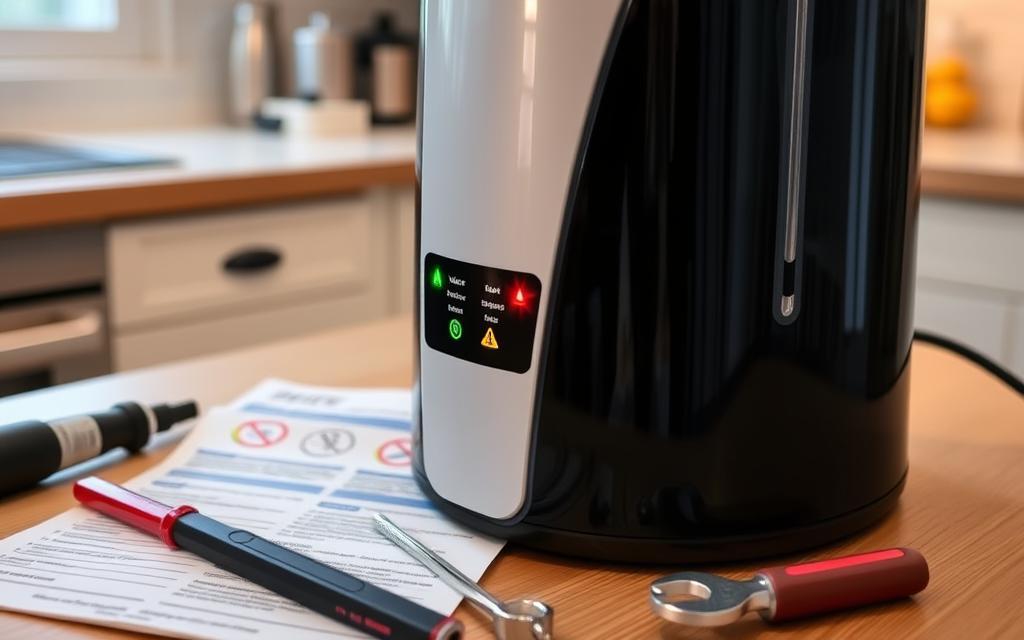
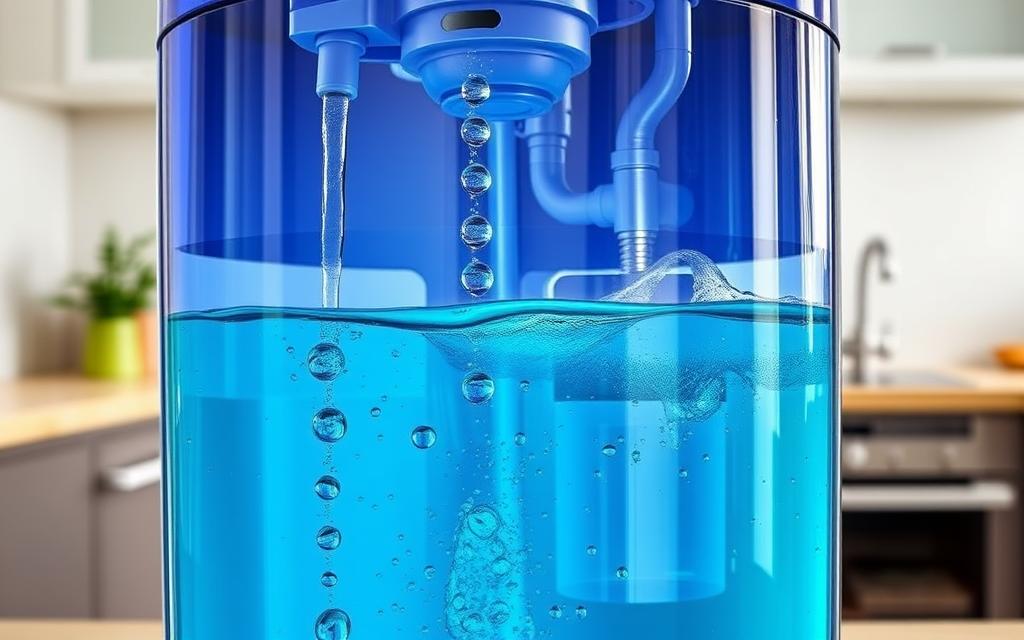
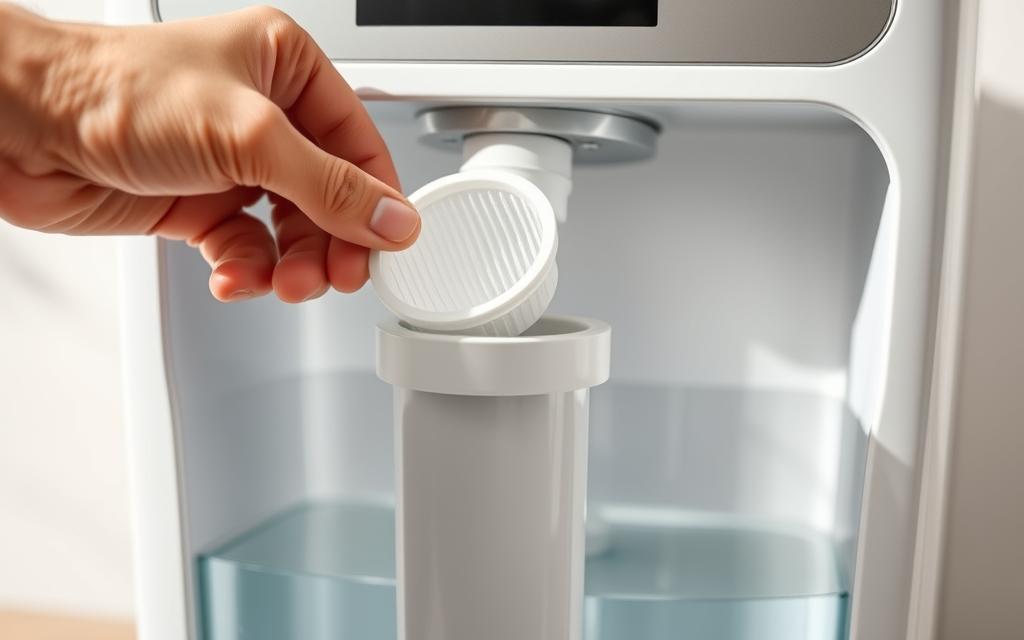
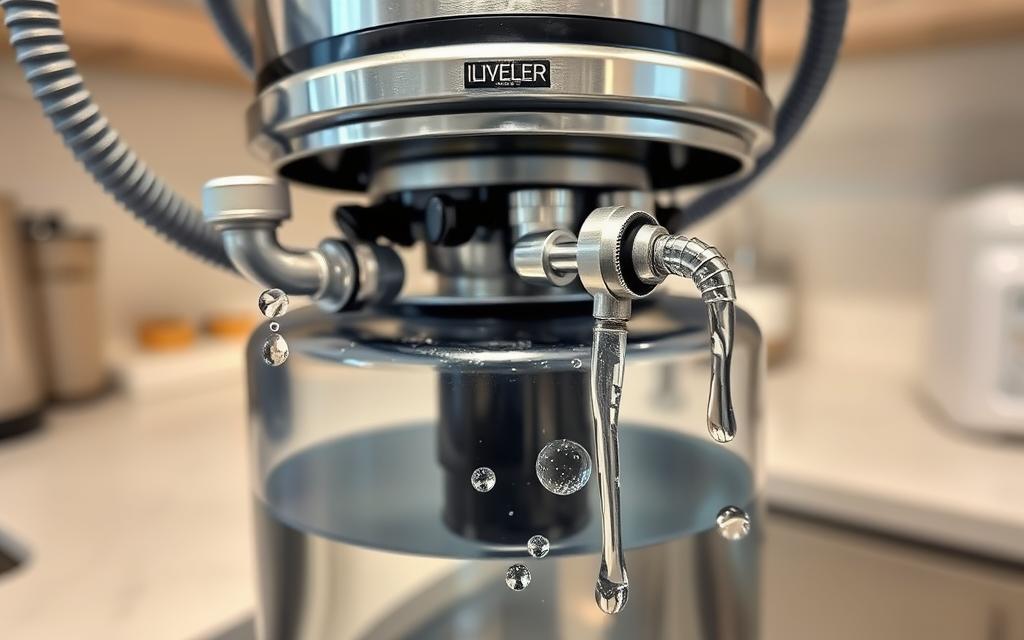
Leave a Reply